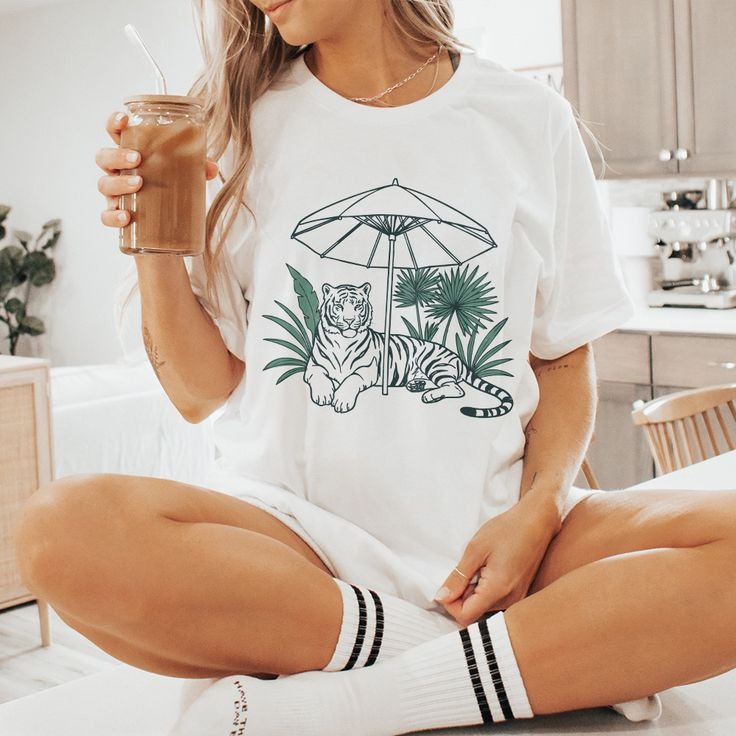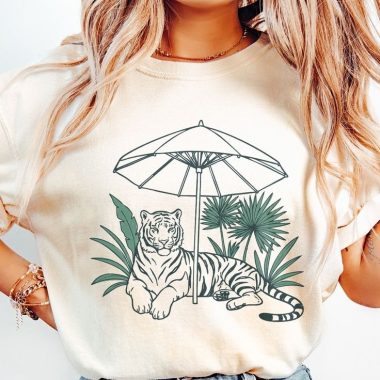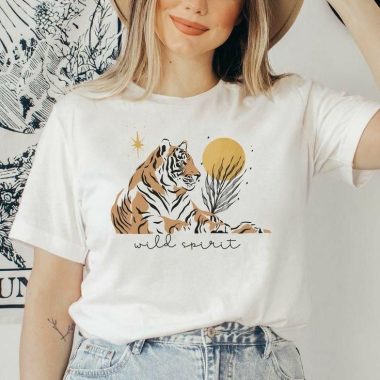Prologue
Fashion is a living tapestry, woven from countless threads of history, culture, innovation, and imagination. It is at once intensely personal and profoundly collective, an ever‑changing language through which we articulate our identities, our affiliations, and our aspirations. From the first animal skins draped for protection to garments infused with nanotechnology, fashion chronicles humanity’s journey—its triumphs, its upheavals, its dreams. In this sweeping exploration, we will embark on a journey across millennia and continents, examining how clothing has shaped societies and individuals; how revolutions in technique, trade, and technology have redefined possibility; how sustainable and ethical imperatives are forging a new paradigm; and how the loom of the future promises patterns yet unseen.
Origins and Ornaments
Long before the notion of fashion as we understand it existed, our ancestors clothed themselves for survival. Animal hides and woven plant fibers protected against the elements, but even these rudimentary coverings bore traces of ornamentation: sinewy cords to cinch waists, carved toggles to secure cloaks, pigments to stain fabric. In Neolithic settlements where the first looms emerged, people began to see textiles as more than utilitarian objects. Patterns of zig‑zags and spirals—perhaps inspired by the cycles of moon and sun—were woven into coarse cloth, embedding symbolism in each warp and weft. As early as five thousand years ago in Mesopotamia and the Indus Valley, skilled dyers coaxed vibrant reds from madder root and deep blues from indigo leaf, transforming garments into statements of power, spirituality, and communal identity.
Garments of Power and Prestige
Clothing became a measure of status almost as soon as it became decorative. In ancient Egypt, only the highest echelons donned finely spun linen dyed with saffron or indigo; jewelry of gold and lapis lazuli served as both decoration and talisman. In China, the imperial yellow of the Han dynasty was reserved for the emperor alone, its hues replicated in sumptuous silks that passed through the hands of court artisans whose families guarded weaving secrets across generations. Sumptuary laws in medieval Europe dictated the types of fabrics and trims permissible to different social classes, from the peasant’s coarse wool to the noble’s velvet and ermine. Through these regulations, clothing became an extension of law, a visible declaration of hierarchy and privilege that bound individuals to their place in society.
The Merchant’s Influence and the Trade Wind
The rise of long‑distance trade routes—from the Silk Road winding across Eurasia to the spice fleets tracing monsoon patterns—brought new materials and aesthetic vocabularies into contact. Persian brocades found their way to Venetian ateliers, where Western tailors experimented with Eastern motifs; West African indigo cloth was bartered across Saharan caravans, inspiring North African artisans to adapt resist‑dye techniques. European demand for cotton propelled Portuguese and British ships to India and later the American South, intertwining fashion with empire and exploitation. In these exchanges, clothing became a global currency, its value measured not only in gold but in cultural capital, as communities absorbed, adapted, and reinterpreted foreign styles through local lenses.
The Alchemy of Innovation
The true metamorphosis of fashion arrived with technological revolutions. The spinning jenny, the power loom, and mercerization transformed yarn and fabric production in the eighteenth and nineteenth centuries, slashing costs and broadening availability. Synthetic dyes unleashed a spectrum of hues far brighter and more colorfast than natural pigments, igniting a kaleidoscope of possibilities for designers and consumers alike. The twentieth century’s arrival of nylon, polyester, and spandex introduced stretch and resilience unseen in natural fibers, while digital printing and laser cutting put pattern‑making at the intersection of artistry and precision. Today, bioengineered fabrics grown in laboratories mimic silk and leather without animal sacrifice; garments printed in three dimensions on demand eliminate yardage waste; smart textiles embedded with sensors monitor health metrics or adapt to environmental conditions. Innovation has become the alchemy that transmutes thread into tomorrow.
Fashion as a Mirror of Society
Clothing reflects the prevailing moods and power dynamics of its age. The rigid corsetry and voluminous panniers of the seventeenth and eighteenth centuries embodied hierarchical social structures—women’s bodies constrained to visually reinforce male domination. The rational dress movements of the late nineteenth century, with their rejection of heavy bustles and tight bodices, signaled emerging feminist consciousness and calls for physical liberation. In the wake of two world wars, utility clothing and simplified silhouettes spoke to scarcity and collective sacrifice, even as Dior’s “New Look” of 1947 re‑embraced luxury as an antidote to austerity. The youth revolts of the 1960s and 1970s—mini skirts, bell‑bottom trousers, tie‑dye—were not merely aesthetic rebellions but generational manifestos challenging existing social mores. Each major upheaval and lull in style reveals the silent dialogue between fabric and ideology, where what we wear proclaims who we are, or who we aspire to be.
Subcultures, Street Style, and the Democratization of Taste
While haute couture dictated runway diktats for the few, street fashions and subcultures have repeatedly redefined mainstream aesthetics. Jazz musicians and Harlem’s zoot suiters in the 1930s adopted exaggerated silhouettes as an assertion of identity and resistance. Mods and rockers in 1960s Britain clashed not only in pubs but in style—tailored Italian suits against leather jackets and boots—each emblematic of diverging class sensibilities. Punk’s DIY ethos in the late 1970s rebelled against consumerism itself, shredding ready‑to‑wear garments, safety‑pinning torn fabrics, and scrawling slogans in permanent marker. Skate culture, hip‑hop, and more recently, normcore have each asserted that authenticity thrives on appropriation, reinvention, and, above all, accessibility. With the advent of social media platforms and street‑style photography, the once‑narrow corridor between designer and consumer has exploded into a democratic forum, where viral images shape trends in hours and micro‑influencers wield as much sway as legacy fashion houses.
Sustainability: The New Imperative
The staggering environmental toll of the fashion industry—water scarcity from cotton cultivation, carbon emissions from global supply chains, mountains of discarded clothing in landfills—has prompted urgent calls for systemic change. Brands and consumers alike are reassessing the take‑make‑waste model. Organic and regenerative agriculture practices reduce chemical inputs in fiber production. Closed‑loop dyeing technologies recycle water and benign salts. Second‑hand markets and rental platforms redefine ownership, inviting wardrobe rotation as a form of stewardship. Some designers craft garments for disassembly, zippers and seams engineered for easy recycling. Blockchain and digital tagging offer transparent traceability, allowing shoppers to verify the provenance and labor conditions of every stitch. In embracing circularity, fashion seeks to align its lust for novelty with respect for the planet, transforming habit‑forming consumption into mindful participation in a regenerative economy.
Ethics and Equity: Weaving Human Rights into Fashion’s Fabric
Beyond ecological concerns, the industry must reckon with the human cost of clothing. Garment workers in many regions endure low wages, unsafe factories, and exploitative hours. The tragedy of Rana Plaza in Dhaka in 2013, where more than a thousand workers perished, galvanized global attention to supply‑chain accountability. Since then, third‑party auditing, living‑wage initiatives, and worker‑driven social responsibility models have gained traction. Grassroots collectives of tailors and weavers are forming cooperatives that ensure fair remuneration and job security. Brands are entering into social impact projects—providing healthcare, education, and community development—to honor the artisans whose labor underpins every collection. Fashion’s moral compass now points toward justice: only when people throughout the supply chain flourish can the industry claim true elegance.
Technology’s Digital Wardrobe
The digital revolution has dressed the industry in pixels. E‑commerce, fueled by AI‑driven recommendation engines, personalizes shopping experiences, while virtual fitting rooms diminish returns and size‑related waste. Augmented reality apps overlay garments on real‑time video feeds, enabling try‑before‑you‑buy from the comfort of home. Cryptographic tokens and NFTs establish digital ownership of limited‑edition “phygital” pieces that traverse real and virtual worlds. Virtual influencers and avatars model collections on gaming platforms and metaverse environments, blurring the line between physical garments and digital couture. Fashion weeks pivot online, streaming shows in immersive 360‑degree formats and hosting interactive digital showrooms. As garments become data‑rich artifacts—carrying metadata on provenance, sustainable credentials, and user feedback—consumers gain unprecedented visibility into the lifecycle of every piece.
Artistry and Collaboration
In today’s creative economy, fashion thrives on collaboration. Designers partner with artists, filmmakers, musicians, and architects to transcend the boundaries of cloth. Capsule collections between luxury houses and streetwear labels fuse heritage techniques with subcultural gravitas, generating fresh narratives and tapping into new audiences. Pop‑up installations transform retail spaces into experiential ateliers, where craft demonstrations, live performances, and immersive environments invite consumers into the designer’s world. Cross‑industry partnerships with sportswear innovators bring performance science into couture, yielding garments that excel under both runway lights and the harshest athletic conditions. These alliances dissolve hierarchies, fostering innovation through multidimensional perspectives and affirming fashion’s role as a multidisciplinary art form.
Fashion as Narrative
Ultimately, clothing is a medium of storytelling. Every garment a person dons becomes a chapter in their unfolding biography. A well‑worn denim jacket speaks of road trips and campfires. A bespoke tuxedo whispers of milestone celebrations and self‑assurance. Traditional dress preserves cultural memory, each fold and embroidery motif a mnemonic of ancestral wisdom. In an era of rapid change and fluid identities, fashion offers a constant: a tactile expression of who we are, where we come from, and where we wish to go. Whether tailored or thrifted, hand‑stitched or 3D‑printed, every piece participates in a dialogue between wearer and world, a performative text written in fabric and thread.
Global Crossroads and Cultural Respect
As fashion grows ever more global, it must navigate the line between cultural appreciation and appropriation. Indigenous communities from the Arctic to the Amazon possess textile traditions honed over centuries: geometric skins, feathered capes, intricate beadwork. When designers draw on these sources, they must engage in equitable partnerships that honor original creators, share revenues, and support cultural preservation. Fashion weeks in Lagos, Jakarta, and Mexico City shine a light on local talents who reinterpret global currents through indigenous aesthetics. In this reciprocal exchange, fashion becomes a caravan of ideas, where dialogue replaces extraction and mutual respect weaves a richer, more inclusive global wardrobe.
Pivotal Moments of Reinvention
Fashion reinvents itself at critical junctures. The pared‑down minimalism of the 1990s reacted against the maximalism of the eighties; the Y2K aesthetic embraced technofuturism at the dawn of the millennium; the recent resurgence of vintage silhouettes channels nostalgia amid digital overload. Post‑pandemic runways witnessed a return to tactile richness—velvets, plush knits, artisanal handwork—underscoring a longing for human connection after isolation. Such pivots are both reactive and visionary, reflecting collective longings while anticipating untapped possibilities. As each era sheds its sartorial skin, the next emerges with fresh silhouettes, palettes, and philosophies.
Charting Fashion’s Future
Looking forward, fashion’s destiny entwines with global challenges and technological breakthroughs. Biofabrication could yield lab‑grown leathers and silks, sidestepping animal agriculture’s environmental toll. Regenerative fiber crops may restore soil health and sequester carbon. AI could co‑design garments in real time, interpreting individual biometrics and personal histories to craft pieces that fit bodies and souls alike. Decentralized microfactories, equipped with modular machines, could localize production, shortening supply chains and empowering communities to reclaim creative agency. Virtual showrooms and blockchain‑verified provenance might render counterfeits obsolete, while digital‑physical hybrids let consumers inhabit both worlds seamlessly. Amid these shifts, fashion’s core remains: the human impulse to clothe our bodies in ways that reflect our inner landscapes and collective dreams.
Epilogue
The loom of possibility spins onward, each generation adding its own designs to the tapestry of fashion. From the loom workers of ancient civilizations to the digital artisans of tomorrow, from the stitched rituals of ceremony to the pulsating neon of virtual runways, fashion charts humanity’s perpetual dance with self‑expression, identity, and innovation. As we weave the threads of history, culture, sustainability, and technology, we fashion not only garments but the contours of our shared future. In this boundless tapestry, every stitch matters, every choice resonates, and every garment—no matter how humble or opulent—becomes a testament to the enduring power of creativity and the ever‑evolving narrative of who we are.




